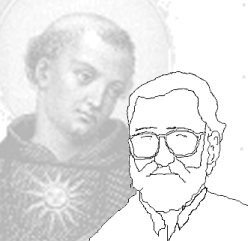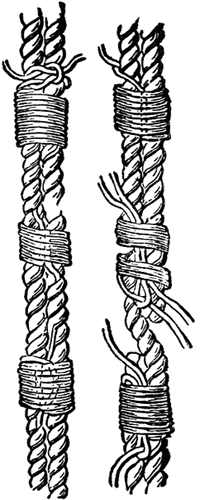 Johnjoe McFadden has followed up the paper on his conscious electromagnetic information (CEMI) field which we discussed recently with another in the JCS – it’s also featured on MLU, where you can access a copy.
Johnjoe McFadden has followed up the paper on his conscious electromagnetic information (CEMI) field which we discussed recently with another in the JCS – it’s also featured on MLU, where you can access a copy.
This time he boldly sets out to tackle the intractable enigma of meaning. Well, actually, he says his aims are more modest; he believes there is a separate binding problem which affects meaning and he wants to show how the CEMI field offers the best way of resolving it. I think the problem of meaning is one of those issues it’s difficult to sidle up to; once you’ve gone into the dragon’s lair you tend to have to fight the beast even if all you set out to do was trim its claws; and I think McFadden is perhaps drawn into offering a bit more than he promises; nothing wrong with that, of course.
Why then, does McFadden suppose there is a binding problem for meaning? The original binding problem is to do with perception. All sorts of impulses come into our heads through different senses and get processed in different ways in different places and different speeds. Yet somehow out of these chaotic inputs the mind binds together a beautifully coherent sense of what is going on, everything matching and running smoothly with no lags or failures of lip-synch. This smoothly co-ordinated experience is robust, too; it’s not easy to trip it up in the way optical illusions so readily derail up our visual processes. How is this feat pulled off? There are a range of answers on offer, including global workspaces and suggestions that the whole thing is a misconceived pseudo-problem; but I’ve never previously come across the suggestion that meaning suffers a similar issue.
McFadden says he wants to talk about the phenomenology of meaning. After sitting quietly and thinking about it for some time, I’m not at all sure, on the basis of introspection, that meaning has any phenomenology of its own, though no doubt when we mean things there is usually some accompanying phenomenology going on. Is there something it is like to mean something? What these perplexing words seem to portend is that McFadden, in making his case for the binding problem of meaning, is actually going to stick quite closely with perception. There is clearly a risk that he will end up talking about perception; and perception and meaning are not at all the same. For one thing the ‘direction of fit’ is surely different; to put it crudely, perception is primarily about the world impinging on me, whereas meaning is about me pointing at the world.
McFadden gives five points about meaning. The first is unity; when we mean a chair, we mean the whole thing, not its parts. That’s true, but why is it problematic? McFadden talks about how the brain deals with impossible triangles and sees words rather than collections of letters, but that’s all about perception; I’m left not seeing the problem so far as meaning goes. The second point is context-dependence. McFadden quite rightly points out that meaning is highly context sensitive and that the same sequence of letters can mean different things on different occasions. That is indeed an interesting property of meaning; but he goes on to talk about how meanings are perceived, and how, for example, the meaning of “ball” influences the way we perceive the characters 3ALL. Again we’ve slid into talking about perception.
With the third point, I think we fare a bit better; this is compression, the way complex meanings can be grasped in a flash. If we think of a symphony, we think, in a sense, of thousands of notes that occur over a lengthy period, but it takes us no time at all. This is true, and it does point to some issue around parts and wholes, but I don’t think it quite establishes McFadden’s point. For there to be a binding problem, we’d need to be in a position where we had to start with meaning all the notes separately and then triumphantly bind them together in order to mean the symphony as a whole – or something of that kind, at any rate. It doesn’t work like that; I can easily mean Mahler’s eighth symphony (see, I just did it), of whose notes I know nothing, or his twelfth, which doesn’t even exist.
Fourth is emergence: the whole is more than the sum of its parts. The properties of a triangle are not just the properties of the lines that make it up. Again, it’s true, but the influence of perception is creeping in; when we see a triangle we know our brain identifies the lines, but we don’t know that in the case of meaning a triangle we need at any stage to mean the separate lines – and in fact that doesn’t seem highly plausible. The fifth and last point is interdependence: changing part of an object may change the percept of the whole, or I suppose we should be saying, the meaning. It’s quite true that changing a few letters in a text can drastically change its meaning, for example. But again I don’t see how that involves us in a binding problem. I think McFadden is typically thinking of a situation where we ask ourselves ‘what’s the meaning of this diagram?’ – but that kind of example invites us to think about perception more than meaning.
In short, I’m not convinced that there is a separate binding problem affecting meaning, though McFadden’s observations shed some interesting lights on the old original issue. He does go on to offer us a coherent view of meaning in general. He picks up a distinction between intrinsic and extrinsic information. Extrinsic information is encoded or symbolised according to arbitrary conventions – it sort of corresponds with derived intentionality – so a word, for example, is extrinsic information about the thing it names. Intrinsic information is the real root of the matter and it embodies some features of the thing represented. McFadden gives the following definition.
Intrinsic information exists whenever aspects of the physical relationships that exist between the parts of an object are preserved – either in the original object or its representation.
So the word “car” is extrinsic and tells you nothing unless you can read English. A model of a car, or a drawing, has intrinsic information because it reproduces some of the relations between parts that apply in the real thing, and even aliens would be able to tell something about a car from it (or so McFadden claims). It follows that for meaning to exist in the brain there must be ‘models’ of this kind somewhere. (McFadden allows a little bit of wiggle room; we can express dimensions as weights, say, so long as the relationships are preserved, but in essence the whole thing is grounded in what some others might call ‘iconic’ representation. ) Where could that be? The obvious place to look is in the neurons. but although McFadden allows that firing rates in a pattern of neurons could carry the information, he doesn’t see how they can be brought together: step forward the CEMI field (though as I said previously I don’t really understand why the field doesn’t just smoosh everything together in an unhelpful way).
The overall framework here is sensible and it clearly fits with the rest of the theory; but there are two fatal problems for me. The first is that, as discussed above, I don’t think McFadden succeeds in making the case for a separate binding problem of meaning, getting dragged back by the gravitational pull of perception. We have the original binding problem because we know perception starts with a jigsaw kit of different elements and produces a slick unity, whereas all the worries about parts seem unmotivated when it comes to meaning. If there’s no new binding problem of meaning, then the appeal of CEMI as a means of solving it is obviously limited.
The second problem is that his account of meaning doesn’t really cut the mustard. This is unfair, because he never said he was going to solve the whole problem of meaning, but if this part of the theory is weak it inevitably damages the rest. The problem is that representations that work because they have some of the properties of the real thing, don’t really work. For one thing a glance at the definition above shows it is inherently limited to things with parts that have a physical relationship. We can’t deal with abstractions at all. If I tell you I know why I’m writing this, and you ask me what I mean, I can’t tell you I mean my desire for understanding, because my desire for understanding does not have parts with a physical relationship, and there cannot therefore be intrinsic information about it.
But it doesn’t even work for physical objects. McFadden’s version of intrinsic information would require that when I think ‘car’ it’s represented as a specific shape and size. In discussing optical illusions he concedes at a late stage that it would be an ‘idealised’ car (that idealisation sounds problematic in itself); but I can mean ‘car’ without meaning anything ideal or particular at all. By ‘car’ I can in fact mean a flying vehicle with no wheels made of butter and one centimetre long (that tiny midge is going to regret settling in my butter dish as he takes his car ride into the bin of oblivion courtesy of a flick from my butter knife), something that does not in any way share parts with physical relationships which are the same as any of those applying to the big metal thing in the garage.
Attacking that flank, as I say, probably is a little unfair. I don’t think the CEMI theory is going to get new oomph from the problems of meaning, but anyone who puts forward a new line of attack on any aspect of that intractable issue deserves our gratitude.


 Sometimes mistakes can be more interesting than getting it right. Last week I was thinking about Pauen’s claim, reasonable enough, that belief in qualia is ultimately based on the intuitive sense that experience and physics are two separate realms. The idea that subjective stuff, the redness of red and so on, could be nothing but certain jigs danced by elementary particles, provokes a special incredulity. What’s the famous quote that sums that up, I thought? Something about…
Sometimes mistakes can be more interesting than getting it right. Last week I was thinking about Pauen’s claim, reasonable enough, that belief in qualia is ultimately based on the intuitive sense that experience and physics are two separate realms. The idea that subjective stuff, the redness of red and so on, could be nothing but certain jigs danced by elementary particles, provokes a special incredulity. What’s the famous quote that sums that up, I thought? Something about…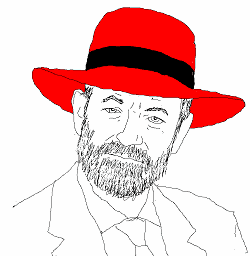 ‘Aping Mankind’ is a large scale attack by Raymond Tallis on two reductive dogmas which he characterises as ‘Neuromania’ and ‘Darwinitis’. He wishes especially to refute the identification of mind and brain, and as an expert on the neurology of old age, his view of the scientific evidence carries a good deal of weight. He also appears to be a big fan of Parmenides, which suggests a good acquaintance with the philosophical background. It’s a vigorous, useful, and readable contribution to the debate.
‘Aping Mankind’ is a large scale attack by Raymond Tallis on two reductive dogmas which he characterises as ‘Neuromania’ and ‘Darwinitis’. He wishes especially to refute the identification of mind and brain, and as an expert on the neurology of old age, his view of the scientific evidence carries a good deal of weight. He also appears to be a big fan of Parmenides, which suggests a good acquaintance with the philosophical background. It’s a vigorous, useful, and readable contribution to the debate.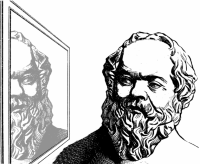 Introspection, the direct examination of the contents of our own minds, seems itself to be in many minds at the moment. The latest issue of the Journal of Consciousness Studies was devoted to papers on introspection, marking the tenth anniversary of the publication of The View from Within, by Francisco Varela and Jonathan Shear (which was itself a special edition of the JCS); and now
Introspection, the direct examination of the contents of our own minds, seems itself to be in many minds at the moment. The latest issue of the Journal of Consciousness Studies was devoted to papers on introspection, marking the tenth anniversary of the publication of The View from Within, by Francisco Varela and Jonathan Shear (which was itself a special edition of the JCS); and now  I don’t know about that, but aren’t they right to emphasise the potential value of introspection? Isn’t it the case that introspection is our only source of infallible information? Most of the things we perceive are subject to error and delusion, but we can’t, for example, be wrong about the fact that we are feeling pain, can we? That seems interesting to me. Our impressions of the outside world come to us through a chain of cause and effect, and at any stage errors or misinterpretations can creep in; but because introspection is direct, there’s no space for error to occur. You could well say it’s our only source of certain knowledge – isn’t that worth pursuing a little more systematically?
I don’t know about that, but aren’t they right to emphasise the potential value of introspection? Isn’t it the case that introspection is our only source of infallible information? Most of the things we perceive are subject to error and delusion, but we can’t, for example, be wrong about the fact that we are feeling pain, can we? That seems interesting to me. Our impressions of the outside world come to us through a chain of cause and effect, and at any stage errors or misinterpretations can creep in; but because introspection is direct, there’s no space for error to occur. You could well say it’s our only source of certain knowledge – isn’t that worth pursuing a little more systematically? Infallible? That is the exact reverse of the truth: in fact all introspections are false. Think about it. Introspection can only address the contents of consciousness, right? You can’t introspect the unconscious mental processes that keep you balanced, or regulate your heartbeat. But all of the contents of consciousness have intentionality – they’re all about things, yes? So to have direct experience of mental content is to be thinking about something else – not about the mental state itself, but about the thing it’s about! Now when we attempt to think directly about our own mental states, it follows that we’re not experiencing them in themselves – we’re experiencing a different mental state which is about them. In short, we’re necessarily imagining our mental states. Far from having direct contact, we are inevitably thinking about something we’ve just made up.
Infallible? That is the exact reverse of the truth: in fact all introspections are false. Think about it. Introspection can only address the contents of consciousness, right? You can’t introspect the unconscious mental processes that keep you balanced, or regulate your heartbeat. But all of the contents of consciousness have intentionality – they’re all about things, yes? So to have direct experience of mental content is to be thinking about something else – not about the mental state itself, but about the thing it’s about! Now when we attempt to think directly about our own mental states, it follows that we’re not experiencing them in themselves – we’re experiencing a different mental state which is about them. In short, we’re necessarily imagining our mental states. Far from having direct contact, we are inevitably thinking about something we’ve just made up.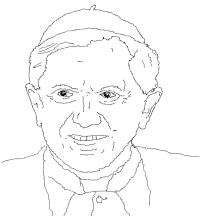 I was pondering the question of my own infallibility recently. Not as the result of a sudden descent into megalomaniacal delusion – I was thinking only of the kinds of infallibility which, if they exist, are shared by all of us conscious beings.
I was pondering the question of my own infallibility recently. Not as the result of a sudden descent into megalomaniacal delusion – I was thinking only of the kinds of infallibility which, if they exist, are shared by all of us conscious beings. The JCS has devoted its latest issue to definitions of consciousness. I thought I’d done reasonably well by quoting
The JCS has devoted its latest issue to definitions of consciousness. I thought I’d done reasonably well by quoting 